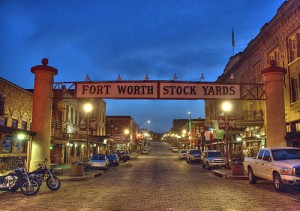 Fort Worth Population 2013
Fort Worth Population 2013
The current population of the city of Fort Worth, Texas is estimated to be about 777,992, which is an increase of about 2.5% from the last record of the population. The city of Forth Worth is the fifth-largest city in the state of Texas, but the 16th largest city in the entire United State of America. Based on the total land area and the total population of the city, the population density of Fort Worth is estimated to be about 2,166 people per square mile.
Demographics of Fort Worth
About 9% of the population of Fort Worth is under the age of 5 years, while about 8% of the population is 65 years and older. Also, about 50.9% of the population is female, while the other 50.1% of the population is male.
The largest racial demographic in the city is the white group, which makes up about 42% of the population. The next largest demographic is the Hispanic or Latino group, which makes up about 34% of the population. Also, the Black or African American population makes up about 19% of the population. Lastly, the Asian population makes up about 4% of the population.
About 79% of the population, ages 25 years and older, have at least their high school degree. However, about 26% of the population, ages 25 years an older, have at least their bachelor’s degree from some college or university.
Historic Preservation
A historic district in Fort Worth is typically a defined area or neighborhood with a common theme based on architectural style, historical development patterns, cultural identity, or social and economic historical patterns. The basic idea behind the creation of a historic district is to preserve the character and identity of an area for the future. Visitors to Fort Worth will discover some of the most intriguing historical sites in the nation within the “City of Cowboys and Culture.” In downtown, take a walk along the Heritage Trails, a series of twenty-two bronze sidewalk markers, concentrated on Main Street from Heritage Park to the Fort Worth Water Gardens, that tell the story of Fort Worth’s history, people, places and events.
Religion in Fort Worth
About 55% of the population of Fort Worth identifies with a religious affiliation, compared to the national average of about 49%. The largest religious affiliation is the Baptist Church, which makes up about 21% of the population. The next largest affiliation is the Roman Catholic Church, which makes up about 11% of the population. The Methodist Church consists of about 6% of the total population. Lastly, the Islamic population is much larger than the average city in the country. About 2.2% of the city is Muslim, compared to the average of 0.8%.
Experience Fort Worth
 Texas Cowboy Hall of Fame
Texas Cowboy Hall of Fame
The Texas Cowboy Hall of Fame, opened in 2001, is a museum that honors men and women in Texas that have shown excellence in skill and dedication to rodeo and the western lifestyle. The museum includes one of the horse and mule barns of the Forth Worth Stockyards National Historic District. Some inductees include George Strait, Nolan Ryan, and Tommy Lee Jones.
Historical Population of Fort Worth
Over the course of the past few decades, the population of Fort Worth has shown positive population growth from year to year, except from 1990 to 1991. In 1990, the populations of Austin and Fort Worth were quite close together. Even though the populations grew apart since then, recently the population of Fort Worth has slowly grown closer to the population of Austin.
| Year | Population |
| 1990 | 460,570 |
| 1991 | 456,959 |
| 1992 | 460,570 |
| 1993 | 462,297 |
| 1994 | 466,901 |
| 1995 | 470,880 |
| 1996 | 476,744 |
| 1997 | 485,028 |
| 1998 | 492,675 |
| 1999 | 502,369 |
| 2000 | 545,993 |
| 2001 | 557,034 |
| 2002 | 570,808 |
| 2003 | 585,799 |
| 2004 | 602,344 |
| 2005 | 622,311 |
| 2006 | 651,808 |
| 2007 | 680,433 |
| 2008 | 704,299 |
| 2009 | 727,577 |
| 2010 | 745,231 |
| 2011 | 758,738 |
Other Resources
Learn more about Fort Worth here.